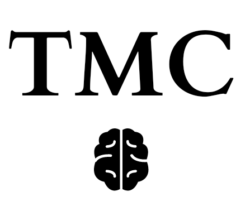Stop smoking!
Stop smoking now.
There’s currently a lively debate running about the impact of junk food advertising aimed at children. Not just the question, ‘should it be allowed?’, but also how it affects children’s behaviour, the ‘pester effect’ and whether it works on a subconscious or more aware level. Are they consuming more sugar, salt and fat as a result of cleverly targeted advertising? Or would they (or their parents) buy this stuff whatever?
But what about the campaigns that are aimed at trying to stop us doing something? How effective are they?
I am referring here to the use of graphic pictures to put people off, say, smoking – diseased gums, or gangrene infected limbs. They were introduced onto cigarette packets some time ago, but the research backing it up is still thin and often contradictory.
The use of repellent photos raises a number of important psychological issues. Generally speaking, the research shows shocking images have more impact than just messages in text-form only. But their impact was short-lived.
The disgusting photos
A number of studies published in the British Medical Journal (BMJ) suggest that although a pack-a-day smoker will see the shocking photo on the packaging a minimum of 20 times a day, they will rapidly cease to absorb or react to its awfulness. Perception becomes inured (def. accustomed to something especially unpleasant) and resistant. The images are effectively blocked pretty quickly. There is, in fact, substantial evidence of the ‘boomerang effect’. In social psychology, this effect refers to the unintended consequences of an attempt to persuade resulting in the adoption of an opposing position instead. It is also sometimes referred to as the ‘the theory of psychological resistance’ which states that attempts to restrict a person’s freedom often produce an ‘anti-conformity boomerang effect’.
This phenomenon is central to understanding whether a campaign of persuasion (weight-loss, alcohol consumption, recycling etc) will work or not. Will it come up against resistance (reactance)?
In other words, will it simply fall on deaf ears and blind eyes or just stubborn opposition and ultimately be counter-productive? The research is ambivalent on these questions.
So, quite often, people will have a negative reaction to being persuaded (reactance). This brings us to the idea of reverse psychology.
It’s a technique used in therapy involving the argument for a belief or behaviour that is opposite to the one desired, with the expectation that this approach will encourage the subject of persuasion to do what is actually required.
For example, in the case of children, a parent using reverse psychology, might tell them, ‘you must stay in the house’, when the real intention is to get them to go out and play.
In the case of smoking, unsubtle, bludgeoning use of crude and disgusting photos will be quickly blocked out.
Don’t stop smoking
Perhaps the more productive approach might be a campaign saying, ‘Go on, smoke all you want! Enjoy every fag and drag. Live a very short life to the full!’
In psychotherapy, this technique is known as the ‘paradoxical intervention’. It’s also been called ‘prescribing the symptom’ and ‘anti-suggestion’. The therapist frames their message so that resistance promotes change. Such therapeutic interventions can have a similar impact as humour. It helps people to see their problems in a new light….by going with them, not against their resistance…they can see their behaviour (smoking, drinking, gambling etc) as less attractive.
The point is that human behaviour and responses are far more nuanced, subtle and complex than those campaigning for behaviour change think. The sledgehammer approach of scaring people with frightening pictures and videos can have unforeseen and possibly counterproductive outcomes.
This has wider implications than just trying to get people to be healthy. Lessons can be learned in a wider political context.
Does ‘project fear’ really work in politics? Or is it counterproductive? It could be argued that the surprise (to some) Brexit result was precisely the result of resistance.
Give it go and stop smoking.

